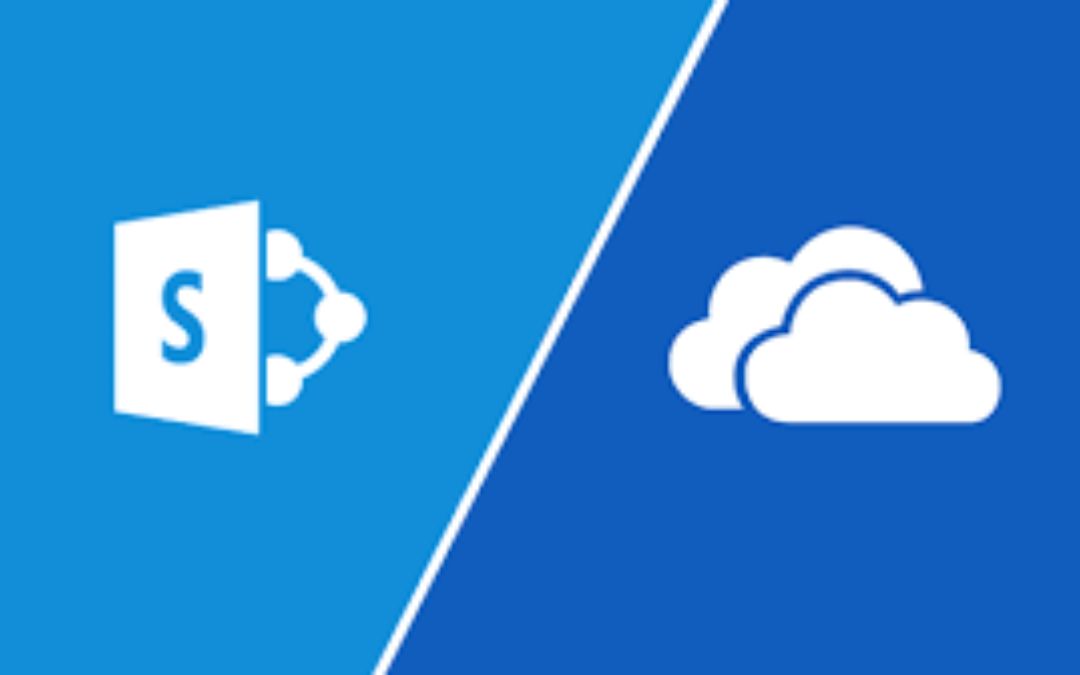
Welcome back to part two of our complete playbook to building a high-performance IT infrastructure.
First, a quick recap.
Why are we doing a deep dive on this subject? And what is a high-performance IT infrastructure anyway?
IT infrastructure is the collection of all the technology components needed for a business or organisation to function, from computers, servers, and software programmes, to network connections, and other tech tools. A high-performance IT infrastructure helps businesses work faster, more efficiently, and securely. It’s a game-changer for any company looking to succeed in today’s fast-paced world.
To read first part click here: Building a High-Performance IT Infrastructure: The Complete Playbook – Part 1 – Operum
So, in part two, we’ll continue our comprehensive guide to building your own high-performance infrastructure with topics such as the importance of fast and efficient networking, cloud computing and virtualisation, maintenance and troubleshooting, and more.
We’ll also finish off with a list of useful resources and contact details, so you reach out to me personally (and my friendly team of IT experts) whenever you need IT support. Okay, that’s enough of an introduction to part two. Let’s continue:
III. Fast and Efficient Networking
A. Networking speed is crucial for keeping your business running smoothly and efficiently.
Here’s a simple explanation with some examples:
- Productivity: Slow networks can cause delays in tasks like loading web pages, downloading files, or accessing online applications, leading to wasted time and frustration for your employees. For example, if your sales team has to wait for customer data to load, they may miss out on potential sales opportunities.
- Business growth: As your company grows, so does the amount of data you need to transfer and process. A fast network ensures that your systems can handle increasing demands without slowing down. For example, a high-speed network can better accommodate a growing number of users, devices, and cloud services, preventing bottlenecks and performance issues.
- Customer experience: A fast network helps you provide a better experience for your customers, whether they’re visiting your website or using your online services. For example, a slow-loading website can drive customers away, while the opposite can keep them engaged and more likely to make a purchase.
By prioritising high-speed connectivity, you can boost your business’s productivity, support its growth, and improve the overall customer experience.
B. Network switches help connect devices in your network and manage data traffic.
Here’s a simple explanation with some examples:
- Managed switches: These switches give you more control over your network, allowing you to configure settings and monitor performance. For example, you can set up virtual LANs (VLANs) to separate different types of network traffic or prioritise certain data for better performance. Managed switches are great for businesses that need advanced features and have an IT team to manage them.
- Unmanaged switches: These are plug-and-play switches that don’t require any configuration. They’re more affordable and easier to use but offer less control over your network. Unmanaged switches are suitable for smaller businesses or home networks where advanced features aren’t necessary.
When choosing a network switch, consider your business’s specific needs and technical expertise. If you need more control and customisation, a managed switch might be the right choice. If you prefer a simpler, more affordable option, an unmanaged switch could be a better fit.
C. Selecting the right network switches for your business involves considering various factors to make sure you get the best performance and features.
Here’s a simple explanation with some examples:
- Port density: Think about the number of devices you need to connect, both now and in the future, to ensure your switch has enough ports. For example, if you have 20 computers in your office, you might need a switch with at least 24 ports to allow for some expansion.
- Throughput: Check the switch’s data transfer speed to make sure it can handle your network traffic efficiently. For example, if you have a lot of high-definition video streaming or large file transfers, you might need a switch with a higher throughput, such as a gigabit switch.
- Power over Ethernet (PoE) capabilities: If you have devices like IP cameras or wireless access points that need power as well as a network connection, look for a switch with PoE capabilities. This can simplify your setup by providing power and data through a single Ethernet cable. For example, a PoE switch can save you from having to install separate power outlets near each device.
- Quality: Avoid buying low-quality, cheap switches that may fail under heavy load or have a short lifespan. Invest in reliable switches from reputable brands to ensure your network stays up and running.
By considering these factors, you can choose the right network switches that will meet your business needs, provide reliable performance, and support future growth.
Here are a few reputable brands for both managed and unmanaged switches:
Managed Switches:
- Cisco: Cisco is a well-known and trusted brand in the networking industry, offering a wide range of managed switches with various features and port configurations.
- Hewlett Packard Enterprise (HPE): HPE’s Aruba line of managed switches is designed for various business sizes and needs, offering high performance, scalability, and robust security features.
- NETGEAR: NETGEAR provides a variety of managed switches, including their ProSAFE line, which offers features such as VLANs, QoS, and advanced security options.
Unmanaged Switches:
- TP-Link: TP-Link offers a range of affordable unmanaged switches with different port counts and speeds, suitable for small businesses and home networks.
- D-Link: D-Link’s unmanaged switches are known for their reliability and ease of use, making them a popular choice for plug-and-play networking.
- Ubiquiti Networks: Ubiquiti’s UniFi and EdgeSwitch Lite series of unmanaged switches provide a balance between simplicity and performance, ideal for small to medium-sized businesses.
D. Configuring and optimising your network means fine-tuning its settings and structure to enhance performance and security.
Here’s a simple explanation with some examples:
- Quality of Service (QoS) policies: QoS allows you to prioritise important network traffic, ensuring that critical applications and services run smoothly even during high-traffic periods. For example, you might give higher priority to video conferencing or VoIP calls to prevent dropped calls or poor video quality.
- Network segmentation: Divide your network into smaller, separate sections to improve security and manageability. This can help prevent unauthorised access and limit the spread of potential security threats. For example, you can create a separate VLAN for your guest’s Wi-Fi network, keeping guest devices away from your main business network and sensitive data.
By implementing QoS policies and segmenting your network, you can prevent network congestion and enhance security, ensuring a better experience for both your employees and customers. Neglecting these optimisations may lead to slower network performance and increased security risks.
E. Powerful Computers and Laptops
Understanding computer and laptop hardware helps you pick the perfect devices for your needs. Here’s a simpler explanation with some examples:
- Processors: The processor, or CPU, is like the brain of your computer, handling all the calculations and tasks. A powerful processor, such as an Intel Core i7 or AMD Ryzen 7, can help your computer run faster and handle more demanding applications.
- RAM: RAM, or memory, is where your computer stores temporary data while it’s working on tasks. Having more RAM, like 16GB or 32GB, allows your computer to handle more tasks at once, improving overall performance.
- Storage: Your computer’s storage, like SSDs or HDDs, is where you save your files and applications. SSDs are faster and more reliable than HDDs, leading to quicker boot times and application loading.
- Graphics cards: The graphics card, or GPU, handles tasks related to visuals and video. A high-end GPU, such as an NVIDIA GeForce RTX or AMD Radeon RX, can provide better performance for tasks like video editing, gaming, or 3D rendering.
For a more in-depth look at laptop hardware and how to choose the best work laptop, check out our previous blog post: Best Work Laptop Part One
By understanding the basics of computer and laptop hardware, you can make informed decisions when selecting devices that match your specific needs and budget.
IV. Cloud Computing and Virtualization
A. Cloud computing and virtualization are modern technologies that provide several benefits over traditional IT infrastructure.
A few examples:
- Cloud computing: Cloud computing refers to using remote servers over the internet to store, manage, and process data, instead of relying on local servers or personal computers. This allows you to access your data and applications from anywhere with an internet connection. For example, you might use Google Drive to store your documents or Salesforce for managing customer relationships. Cloud computing offers flexibility, easy scalability, and cost savings since you only pay for the resources you use.
- Virtualization: Virtualization involves creating virtual versions of physical hardware, such as servers, storage devices, or networks. This allows multiple virtual machines (VMs) to run on a single physical machine, sharing its resources. For example, you might have a server running multiple VMs, each with its own operating system and applications. Virtualization provides better resource utilisation, easier management, and cost savings since you can run multiple systems on the same hardware.
B. Cloud computing and virtualization offer numerous benefits that can help businesses save money, simplify management, and make better use of resources.
- Reduced capital expenditure: Both cloud computing and virtualization help you save on upfront costs associated with purchasing and maintaining physical hardware, such as servers, storage devices, and networking equipment. You can use shared resources in the cloud or consolidate multiple virtual machines on a single physical server, reducing the need for additional hardware.
- Streamlined management: With cloud computing, you can manage your applications and data through easy-to-use web interfaces, while virtualization allows you to manage multiple virtual machines from a single interface. This simplifies IT management, making it easier to deploy, update, and monitor your systems.
- Increased resource efficiency: Cloud computing lets you scale your resources up or down as needed, ensuring you only pay for what you use. Virtualization, on the other hand, allows you to run multiple virtual machines on a single physical server, which means you can make better use of your existing hardware and reduce energy consumption.
C. If you’re looking for the right cloud computing and virtualization solutions, make sure to compare providers based on their performance, cost, support, and security.
You don’t want to end up with a provider that has a bad reputation or doesn’t take security seriously. Just do some research and read reviews to make sure you’re choosing the best one for your needs.
D. When you’re implementing cloud computing and virtualization in your infrastructure, you want to make sure they integrate well with your current setup.
This way, everything runs smoothly and efficiently. It’s also important to allocate resources properly, so you don’t end up with any performance issues or waste valuable resources. Just take your time, plan it out, and make sure everything works together seamlessly. If you need help, don’t hesitate to ask someone with more experience.
V. Maintenance and Troubleshooting
A. Maintaining your infrastructure is all about keeping things running smoothly and avoiding issues.
- Regular backups: Make sure you regularly backup your important data, like customer records or financial documents, so you don’t lose it if something goes wrong. For example, you can schedule automatic backups to an external hard drive or cloud storage service like Dropbox or Google Drive.
- Monitor system health: Keep an eye on your systems to spot any potential issues early. You can use tools that track things like CPU usage, memory, and disk space to make sure everything is running efficiently. For example, if you notice that your server’s hard drive is filling up, you can clear out unnecessary files or add more storage to prevent a potential crash.
- Keep software up to date: Regularly update your software, including operating systems, applications, and security tools, to ensure you have the latest features and protection against threats. For example, make sure to install updates for Windows or macOS, as well as any antivirus software you use.
B. Understanding common problems and how to fix them is key to keeping your tech running smoothly.
It’s a good idea to build a collection of information on possible issues, what they look like, and how to solve them. This can help you quickly identify and fix problems when they happen. If you don’t have the skills to troubleshoot, it might take longer to get things back up and running, which can slow down your work.
For example, if your internet connection suddenly drops, you could check your knowledge base to see if there are any common causes, like a loose cable or an issue with your service provider. By having this information handy, you can quickly find a solution and get back to work.
In short, being prepared to troubleshoot common issues can help minimise downtime and keep your productivity on track.
C. Resources for further troubleshooting and support:
Utilise vendor documentation, online forums, and professional support services to resolve complex issues. Ignoring available resources may lead to costly mistakes and prolonged downtime.
Conclusion
Planning, building, and maintaining a high-performance IT infrastructure requires a comprehensive approach, from assessing your current systems to implementing the latest technologies. In this blog, I’ve given you my expert insight into how to build your own high-performance infrastructure from start to finish alongside the key considerations and most important factors to bear in mind. My final thoughts? Continuously evaluate and optimise your IT infrastructure to meet evolving business needs and stay ahead of the competition. I recommend you begin the journey towards a more efficient, secure, and scalable IT infrastructure by following the guidelines and best practices outlined in this playbook. I’ve added some useful resources below to further help you in your journey. Good luck!
Finally, remember that I’m always here to help if you need personalised IT advice. I’ll be back with a new blog very soon, but in the meantime, if you need IT support of any kind, please reach out and contact my friendly team of experts. At Operum, we can help with everything from cyber security, cloud computer, and IT compliance to IT infrastructure support, cyber essentials, and more. We love working with our IT support clients and using our IT knowledge and experience to make their lives easier. We take care of the tech stuff so you can focus on what you do best. You can contact us here: [Contact Us – Operum].
Sign up below to join the Operum newsletter
Resources:
Cisco Firepower series: https://www.cisco.com/c/en_uk/products/security/firewalls/index.html
Palo Alto Networks PA Series: https://www.paloaltonetworks.com/products/secure-the-network/next-generation-firewall
Fortinet FortiGate series: https://www.fortinet.com/products/next-generation-firewall
Sophos XG Firewall series: https://www.sophos.com/en-us/products/xg-firewall.aspx
WatchGuard Firebox appliances: https://www.watchguard.com/wgrd-products/firebox-appliances
SonicWall TZ and NSa Series: https://www.sonicwall.com/products/firewalls/
Cisco ASA VPN gateways: https://www.cisco.com/c/en_uk/products/security/asa-firepower-services/index.html
Juniper SRX Series VPN gateways: https://www.juniper.net/uk/en/products-services/security/srx-series/
OpenVPN Access Server and OpenVPN Cloud: https://openvpn.net/vpn-server/
Cisco ISE: https://www.cisco.com/c/en_uk/products/security/identity-services-engine/index.html
Aruba ClearPass: https://www.arubanetworks.com/products/security/network-access-control/
Forescout CounterACT: https://www.forescout.com/platform/counteract/
Norton Antivirus: https://uk.norton.com/
Bitdefender Antivirus: https://www.bitdefender.co.uk/
Kaspersky Antivirus: https://www.kaspersky.co.uk/
Barracuda Email Security Gateway: https://www.barracuda.com/products/email_security_gateway
Mimecast Email Security: https://www.mimecast.com/products/email-security/
Proofpoint Email Protection: https://www.proofpoint.com/uk/products/email-security-and-protection
ManageEngine Patch Manager Plus: https://www.manageengine.com/patch-management/
Ivanti Patch for Endpoint Manager: https://www.ivanti.com/products/patch-for-endpoint-manager
SolarWinds Patch Manager: https://www.solarwinds.com/patch-manager



